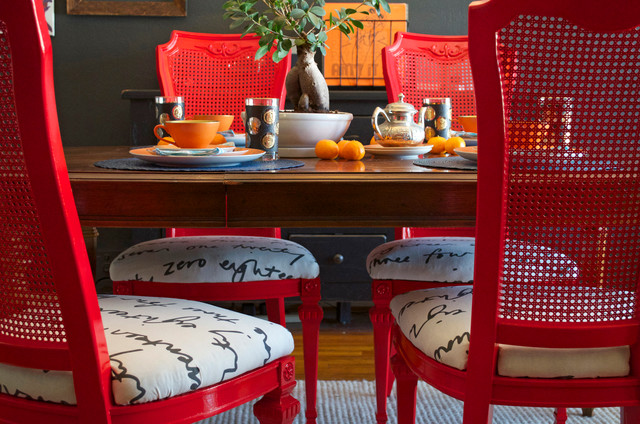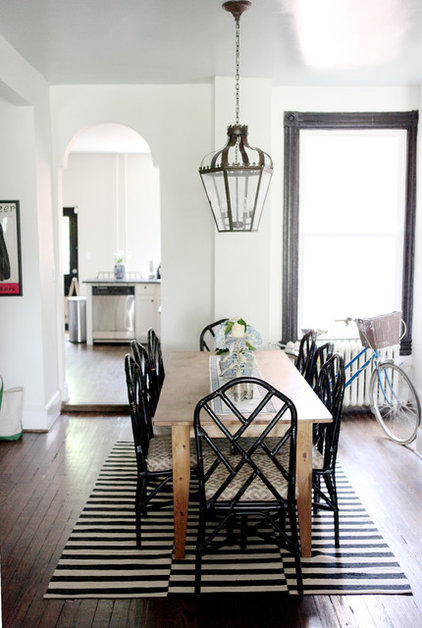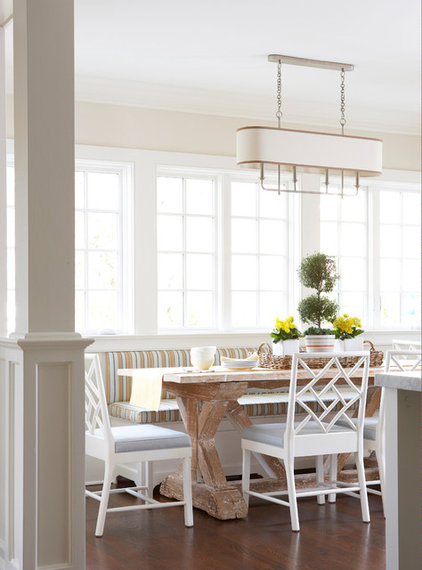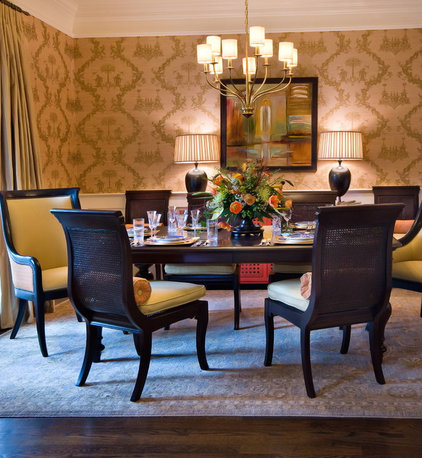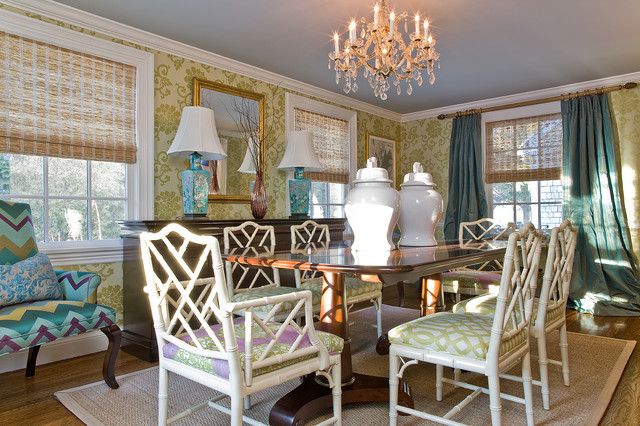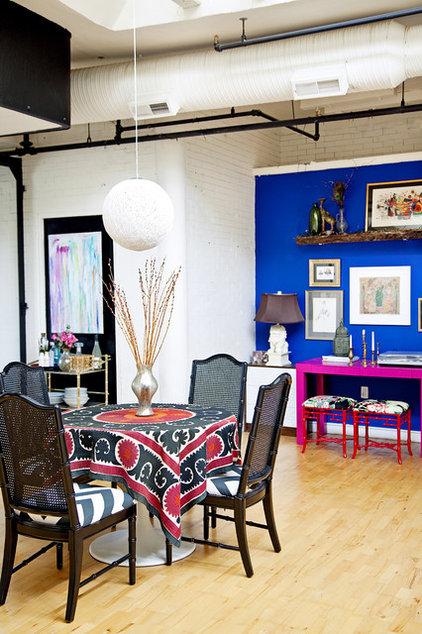Bet Your Bottom Dollar on Cane Chairs for Stylish Seating
The Chippendales of today are inspired by the chairs made by Thomas Chippendale, a London furniture designer and cabinetmaker in the 1700s. It was a popular century for these chair designs, with cane-bottom chairs emerging in China too. The chairs became popular in America around 1820, with the advent of factory-built furniture.
Now ubiquitous at thrift shops and online bargain sites, used chairs like these can be especially easy on the wallet — I recently scored four for a client for just $60 — and are insanely easy to update. And unlike most dining chairs, their seat cushions are usually affixed with just a few screws, which makes it easy to add new fabric. They also look fabulous in just about every color.
Let's take a look at these classic chair styles and how they can help your home look brand new, whether you're on a budget or ready to splurge.
|
by Sarah Greenman
»
|
|
These cane chairs
were given new life with red paint and inexpensive fabric to dress up
the seating. If you're afraid of red overload, pair it with black and
white to tame the powerful effects of red.
Tip: When sourcing cane chairs, be sure the woven back and bottom are in good condition. If the cane weaving is worn or torn, it will cost you to have it repaired, meaning it may no longer be as budget friendly as you thought. |
Tip: Since the backs of these chairs make such a stunning statement, you can save a lot by using inexpensive fabric to upholster the cushions. Search for $1-a-yard fabric in the clearance bin at your local fabric store or use fabric remnants from past projects to update the seats inexpensively. Each cushion will take about 1/2 yard of fabric, so you can update six chairs for $3 bucks. Translation: a steal.
Step-by-step instructions to reupholster a chair seat
|
Cane chair backs come in many
forms — high, low, straight, curved. These curved whitewashed chairs
scream feminine chic in this country chic dining space.
Not in the mood for a cushion fabric DIY? Add a cushion on top of the existing chair and tie it in place. Consider putting two upholstered chairs at the ends of the table or throw a slipcover on two of your existing chairs for a little contrast. |
Tip: Decide early on which lines you want highlighted in your cane chair. Do you want a curved back for a fun and flirty room; a rounded top, which is versatile enough for any decor; or a straight back for a more formal setting?
|
This room is layered with color
and texture — in the fabrics, wallpaper and pillows — and the
Chippendale chairs were not to be outdone. These were painted white to
offset the varied colors in the space and were adorned with two
different fabrics.
Tip: Spray painting is usually much easier than brushing or rolling paint on chairs. It should give you a cleaner finish, too. |
Tip: Any sturdy upholstery fabric will work well on these chairs. Remember you'll need to pull firmly on the edges when stretching the fabric to staple it underneath, so be certain you've chosen a fabric that can handle being stretched. Silks and thin cotton fabric are not well suited for most dining chairs, since they see a lot of wear.
